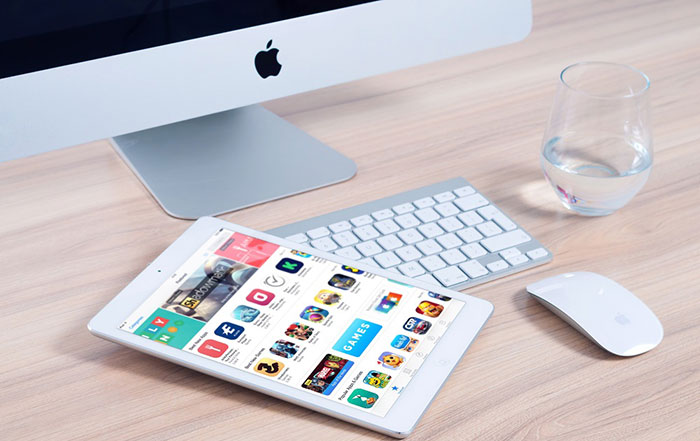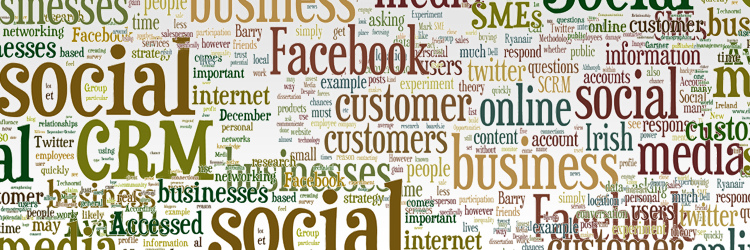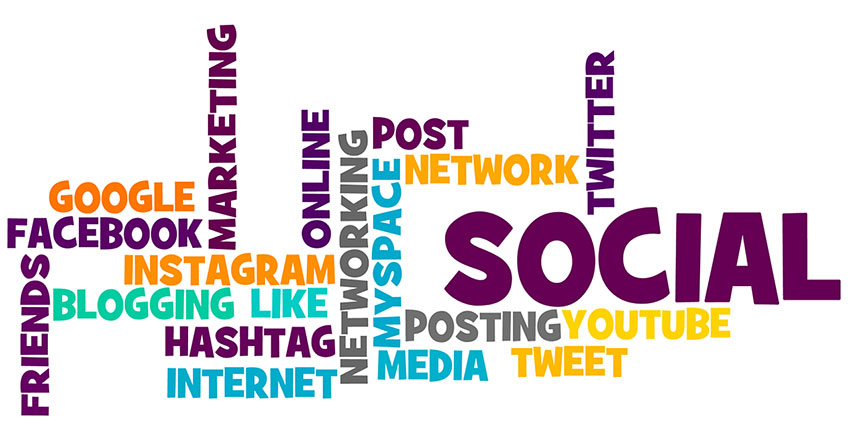
Mar 26, 2018 | Blog, News
Do you have a plan for each social media channel?
Hands up if you have a marketing, or more specifically, a social media marketing strategy? If you do, well done! If you don’t, stop reading and go and get my 1 page template social media plan template.
In your plan, you are likely to have identified what channels you are going to use to promote your business (hopefully through building a community and sharing valuable content). And if you are going to be using more than one social media channel (or platform) to market your business, then I always recommend creating a mini plan for each one.
Creating a mini plan for each channel is really easy. Get a blank piece of paper, and some different coloured pens (if that takes your fancy!) and start writing.
How to create your social media channel plan
Step 1: Purpose
Putting it simply, this is the WHY. What is the value that this channel brings to your business?
For example: “I will use my LinkedIn profile to build my credibility as an expert in [your industry]”
Step 2: Objectives
Here you will look at no more than 3 specific goals for your channels. These goals should be SMART (Specific Measurable Achievable Relevant and Time Limited) and relate to your business goals.
For example: “I will ask for 3 recommendations on my LinkedIn profile each week for the next 3 months. This will help build social proof and credibility for my business.”
Step 3: Audience
Who will you be talking to through this social media channel? Who your audience is for your Facebook page may be different to who you will be speaking to through Twitter or your LinkedIn profile.
Make sure you are specific as possible – you can’t target all SMEs in Australia, but you can target SMEs owners aged 35 – 50 in Sydney who are B2C focussed.
Step 4: Tactics
What are the actions will you do each day, and each week to reach your goals? Tactics are actions that are in line with your strategy, and will help you achieve your goals.
Examples of tactics include:
- Posting 3 times a week
- Using specific hashtags
- Boost a post
- Like and share posts of others
And that’s it! I’d love to hear how your planning is going. Did you find this exercise hard? Did it help you get clarity on what you’re doing? Did you remove or add and social media channels to your marketing mix?

Sep 7, 2017 | Blog, News
Accepting LinkedIn connections
LinkedIn is the best social network for professionals. In Australia it is a platform that is used mainly for connecting to colleagues and other work related matters (and for recruiters to head hunt for talent!).
As a social media tool, LinkedIn is built around making connections; and has prompts to encourage you to grow the number of people you are connected to. But one question I’m often asked about is ‘Should you accept requests from people you don’t know?’ The short answer is: it depends. Below is the longer answer.
The next time that someone send an invitation in your LinkedIn account, think twice before accepting it. Not just because you don’t know the person but this is because it is part of LinkedIn’s official rule. This is under Section 8.2 wherein it states that members agree not to “invite people you do not know to join your network.” This is because LinkedIn’s purpose is to build connections that are appropriate and build genuine professional communities. But, and this is a big but, as long as you do your due diligence, it is ok to accept a connection from someone you do not know.
You might also consider these factors when it comes to accepting connections from LinkedIn.
- Check the profile photo. If there is no photo, I’d say no.
- Personal message. I’ve been impressed by those who have taken the time to craft a personal message before sending me a request.
- Other people they are connected to. If you have lots of mutual connections, then maybe this person is fine, and could add value to your network.
- Browse through their profile. The profile says a lot about that person so check interests, current job or past jobs and other important details. Knowing this will help you in deciding whether or not to accept the invitation.
Quality over quantity is key when connecting with other on LinkedIn. Remember, LinkedIn is designed to build connections to help you in your professional life so before accepting, always take a little time to think about it.
If you want help getting more out of your social media marketing, please download our free step by step guide today!

Jul 6, 2017 | Blog, News
Using LinkedIn ‘In Mail’ without annoying people
Having a lot of emails in your inbox is overwhelming but at the same time, it is a bit annoying. What to read and which is the most important? In Mail, LinkedIn’s private messaging feature, is a way to communicate to your connections outside of regular email. But like every messaging service, there are good, bad, and just plain rude ways to use it!
Here are some simple things you can do to ensure your LinkedIn in mail is valuable, and not spammy:
- Have a relevant subject line. We have limited time to engage, so a good subject line will get people to open your message.
- Keep your message short and simple. People won’t have the time to read a lengthy message, and will just delete it. Be simple and make sure to get to the point as quickly as possible.
- Quality over quantity. Having lot of connections doesn’t mean that they have the same interest so rather than sending all your connections your mail, tailor your message to the person you are sending it to. Perhaps mention content they have posted recently, or a group that you both belong to.
- Include ‘WIIFT’ – ie, what’s in it for them? Why should someone open your In Mail, then respond?
- You can follow up but don’t be too pushy. Leave it a week or two, then send a follow up In Mail. And definitely don’t send messages daily – it looks a little stalkerish.
And lastly, let me share with you my biggest peeve about a specific LinkedIn behaviour. I’m happy to accept connection requests from people I don’t know (as long as they are legit!). But never (and I mean never!) request to connect with someone, then add them to your email marketing database.
If I’ve connected with you on LinkedIn, I haven’t given you permission to to market to me on any other channel. For you to be able to send me email communications, I need to opt in to your email list, and be able to unsubscribe at any time.
If you want help getting more out of your social media marketing, please download our free step by step guide today!

Jul 1, 2017 | Blog, News
Best time to post on social media by channel
Let’s face it, social media has become so much a part of our lives, that we’re constantly checking our phones for the latest update. It’s also a quick way to connect with friends and loved ones and many SMEs across Australia use it to market their products and services. So when is the best time to post to get maximum exposure?
When it comes to social media, timing sums it all. But posting is not as easy as it sounds because you’re not 100% sure when you will reach your audience. There are literally millions of people checking their accounts regularly, but what really are the best times to post on social media? When should you be sharing your content? Let’s check it out.
- Facebook – o get the best reach, it is generally best to post on Thursday and Friday. To get the most shares, it is recommended to post at 1pm and by 3pm. You’re also likely to get the most clicks at this time.
- Twitter – The strongest days to post are during weekdays (Monday-Thursday). It is best to post during lunchtime between 12pm-3pm. And tweet less during early mornings and late nights.
- LinkedIn – LinkedIn is usually used by professionals during their working hours. Best times to post in this site are between 7:30-8:30 am, 12pm and 5:00-6:00pm.
- Instagram – Engagement through Instagram can happen anytime. This is because Instagram is designed for mobile devices and everyone already own one. But try to post at least once in the morning, and at least once in the late afternoon
- Pinterest – It is best to post in Pinterest during night time and weekends. Best times will be between 8:00-11:00pm everyday especially on Saturdays.
- Tumbler – Tumbler is for evening person so it is best to post here between 7:00 and 10 pm.
- Google+ – Google+ users are most active during morning unlike Tumbler. Meaning, the best time to post here is between 9:00-11:00am.
Now that you know, the best times to post on every social media platform,test it out for yourself . However, before posting your content, make sure your content is relevant to the audience that you are targeting. It is not enough to just hit that post button. Every social media post that you bring out will say something or will reflect on your brand or yourself so make sure to make the most out of it.
If you want help getting more out of your social media marketing, please download our free step by step guide today!

Apr 26, 2017 | Blog, News
Top 10 Tools to Schedule Posts on Social Media
Chances are, you are using some type of social media to promote your business online. With the various platforms used today (including Facebook, Twitter, LinkedIn, Google+, Pinterest, Instagram, and more), the need to constantly update them with fresh content is overwhelming for lots of business owners.
Good thing there are scheduling tools and software that have been to developed to serve mainly two purposes: to save time and generate better results.
Here are 10 of them you can use to make sure your business will be on top!
Hootsuite
Hootsuite an enterprise level social media management tool that lets you manage social media faster, safer, and smarter. This tool can help you schedule and analyse your social media marketing campaigns including ROI. It’s generally free to use if you only have a couple of social media accounts.
Buffer
Buffer is a great tool to schedule, publish, and analyse social media posts in one place. You can share posts to Facebook, Twitter, LinkedIn, Google+, and Pinterest in the best possible times of the day.
MeetEdgar
MeetEdgar recycles your posts, enabling to reach a larger percentage of traffic from recycled content. With this tool, professionals can manage social media accounts with consistency and time-efficiency.
Sprout Social
Sprout Social is the complete social media management tool for social media agencies because you can use this premium social media management tool for multiple Twitter and Facebook accounts.
Social Bro
Social Bro is a Twitter marketing tool for scheduling content, creating ads on Twitter, finding new customers, eliminating market costs, and increasing customer value.
Tailwind
Wondering how you can make managing Pinterest easier? Tailwind is here! This a comprehensive tool to help you with your Pinterest marketing goals. With this app, you can discover content, schedule posts, amplify reach, monitor conversations, and analyse results.
IFTT
IFTT is an automation tool that is simple and easy to use for social media scheduling. It uses applets to bring services that you can utilise every day. Just choose the applet you can turn on and you’re good to go.
SocialOomph
SocialOomph is an effective web tool that provides a host of free and paid productivity features for social media. You can do a lot with the site which has functions for Facebook, Twitter, LinkedIn, Plurk and your own blog.
Social Flow
SocialFlow is a software company that amplifies distribution of owned and earned content across social media platforms. It helps release posts with optimised relevance and timing.
CrowdBooster
CrowdBooster is a tool which helps in improving your online presence. Features include scheduling unlimited tweets for the most optimal time, finding the most engaged fans and followers, and generating comprehensive reporting of performance metrics.
Are you ready to gear up your business to the next level? Check out these tools and start building your social interaction in a more efficient and effective way.





